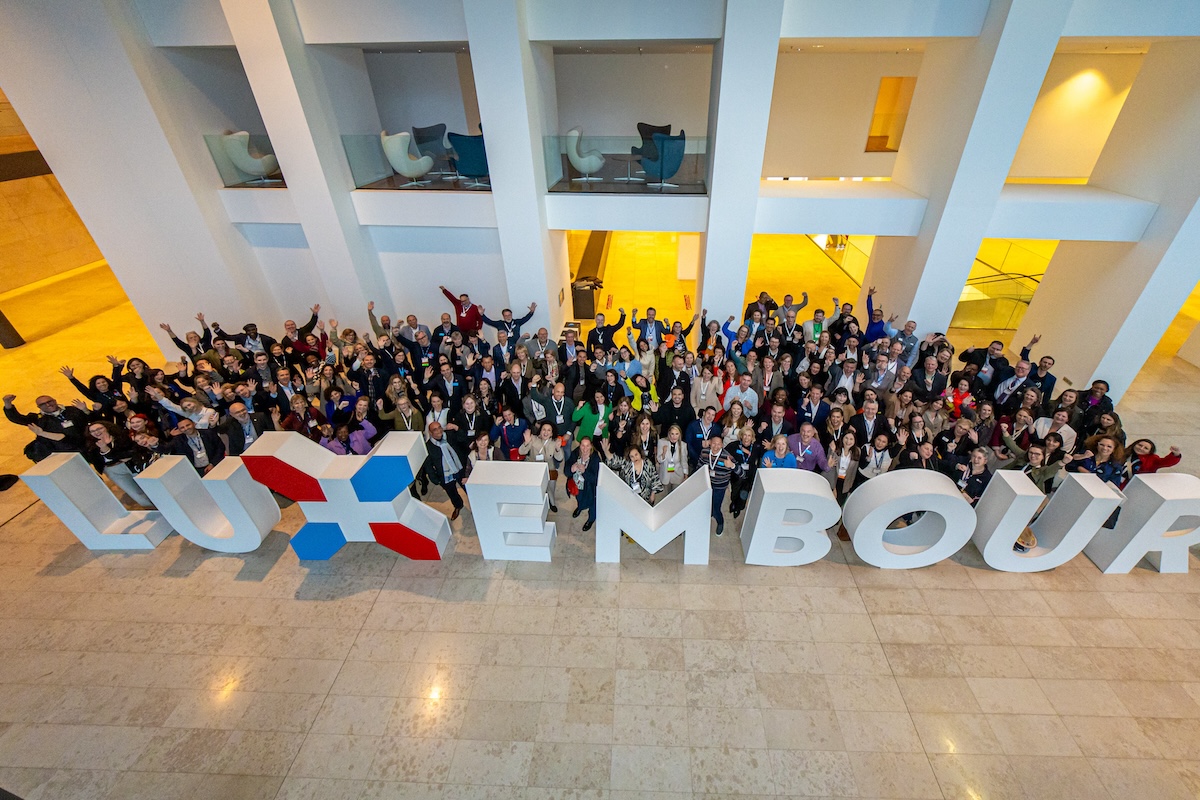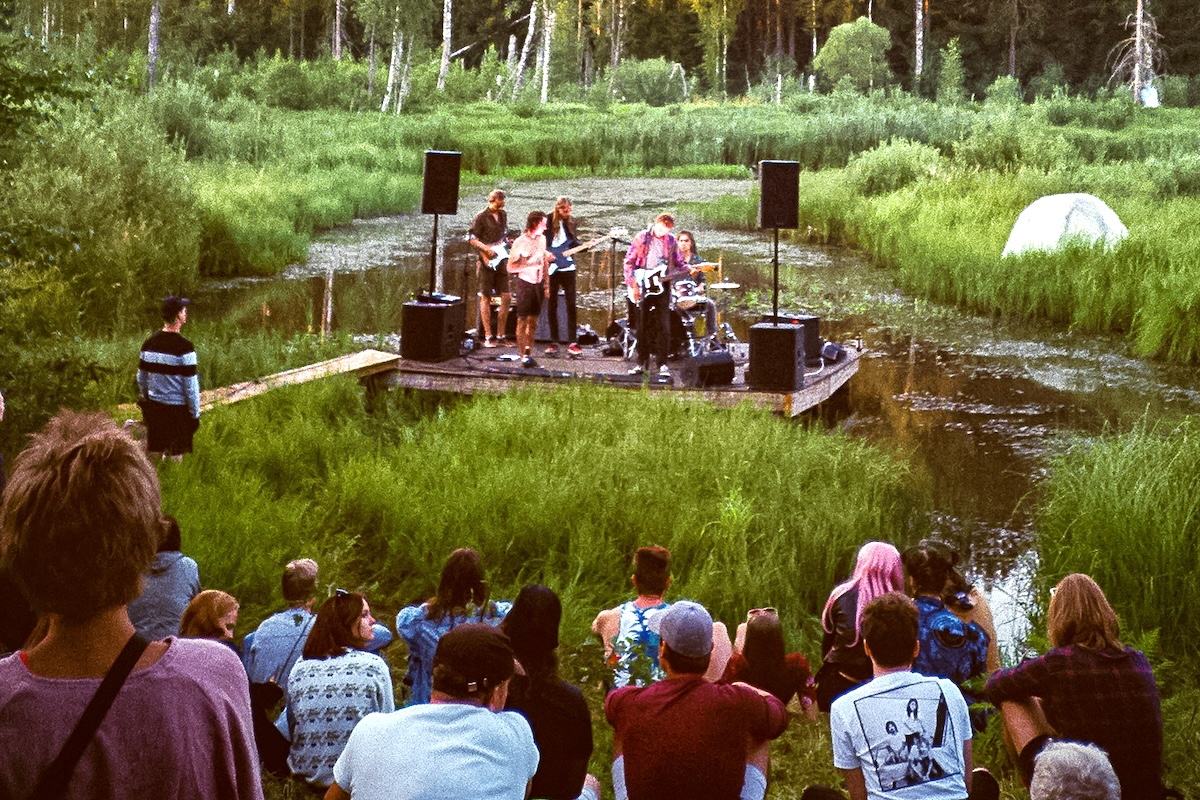Skift Take
Google Xi Days colored outside the lines, shifting paradigms to create an all-encompassing future for the events industry.
The people in the room create the DNA of an event, and like-minded people usually generate one-dimensional thinking. So imagine the magic that happens when an eclectic group of thinkers from varied backgrounds, professions, and demographics gather together — exactly what happened during the Google Experience Institute (Xi) Days.
For three days, a global community of leaders, event and experience designers, artists, authors, philosophers, creators, technologists, researchers, and even a few wizards pushed boundaries and explored the proverbial what-ifs.
“We’ve invited you all here to envision possible futures,” said Megan Henshall, the strategic solution lead for global events at Google and the head creator of Xi, who believes that for an event to be truly successful, it must foster belonging, create community and generate meaning. This is what, in part, made Google’s Xi Days so special; it was a real-life experiment that tested these concepts and more. Its main takeaway? Consider everyone.
The group gathered in Google’s New York City event space on Pier 57. This former shipping port and bus depot is now high-tech, green, and nurturing. From the outside, it looks like any other industrial behemoth. But behind the doors is an Oz-like world of living walls, nooks, and breathtaking views of the Hudson River. As you enter the building, a 300-foot-long ramp that once transported cargo is now converted into a welcoming multimedia experience.
Experiments Abound
Google Xi Days featured new event formats, content delivered in unique ways, and a constant titillation of the senses. The ultimate goal was to help elevate event design, and humanize the act of gathering. It used well-being, inclusion, and belonging while creating joy in the process.
“I am so glad to have had this experience,” said Paul Tramonte, principal designer at Paul Tramonte Events, noting that after the pandemic, it was all about being fast and furious and diving right back into meetings and events. “Google Xi offered the opportunity to stand back and take a 360-degree view. What a gift,” he added.
Focus on Emotions
What if events were about creating emotions without a transactional objective? That was one of the premises of Google’s Xi Days, which focused on the democratization of experience.
Organizers offered attendees choices to control their experience, mitigate their risk, and define their commitments. Google applied multi-dimensional approaches to help understand, measure, and communicate the organizational and societal impacts of events and experiences. It created a humanistic measurement and framework for success.
Tim Mousseau, the founder of Create Safe, was struck by the emphasis on incorporating behavioral sciences into the event design. “There are still questions about what this blending looks like in practical application, especially when measuring an experience’s humanistic impact on individual participants. Still, throughout Xi Days, the Google team and their partners leaned into diverse areas of behavioral science to inform their design decisions. Marrying event design with research around human behaviors resulted in a more innovative, participant-focused, and inclusive experience,” he explained.
Embracing the underlying principle of the democratization of experience created a more engaging event, Mousseau added. “Xi Days modeled how events can be more personally meaningful when we allow people to choose their own path, remove barriers to exploration, and encourage curiosity. By embracing innovative risks and acknowledging that some things might need further refinement, this event successfully tested new ideas while moving away from outdated practices. Overall, the experience showed that when we are willing to push outside our comfort zones while considering everyone, it leads to a better sense of community and drives personal and collective belonging.”
Accessible for All
Under the keen stewardship of Henshall, making experiences accessible for all was another focus of Google’s Xi Days. One session highlighted The Neu Project, which focuses on making the world more welcoming and productive for neurodivergent communities. The panel included Rachel Lowenstein, global head of inclusive innovation, Mindshare; Onyinye Udokporo, founder of Enrich Learning; Ellie Middleton, founder of the (un)masked community for neurodivergents; Paff Evara, co-founder at Take Up Space; Jenny Hamer, ML researcher, Google, and author and keynote speaker, Peter Shankman.
Fostering experimentation while ensuring inclusion is hard to do simultaneously. This challenge was evident in the event’s design. Icons were prominently displayed on all experiences to alert attendees if they could trigger sensitivity to light, sound, smell, and movement.
Independent Exploration Encouraged
Google Xi was also about exploration, allowing participants to choose their own adventure in the Xi Museum. TED-like style talks filled two blocks, one in the morning and the other in the afternoon. At the same time, experiential exhibits and galleries were available to explore all day long. The whole day was about leaning into curiosity. It was about exploring and digging deeper to find the concepts, ideas, and experiences that inspired and resonated.
This set-up appealed to Naomi Clare Crellin, founder of Storycraft Lab, a company focused on understanding audiences.
“I loved the interstitial spaces — the program adjacent spaces that created opportunities for natural collisions to occur. It underscored the need to provide blocks of time not overly programmed and then finding the delicate balance between providing support to the conversations that synthesize key takeaways but not actively driving them,” said Crellin. She also appreciated the role and visibility of docents — welcome faces ready to offer friendly, low-key guidance.
Intentional Gathering
The final day focused on building individual and collective experiences. There were one-on-ones and smaller group meetings to connect with the Xi team, its partners, and one another. The aim was to strengthen, inspire and motivate the Xi community. Ultimately this will empower it to help build and shape the future of the events industry.
“I have been in the experience design industry for 10 years, and Xi Days set a new standard in not just the experience of a conference but the intentionality and care in considering everyone rather than the default modes of events. My work in Architecting Curiosity is to help demonstrate that experience design begins first and foremost with intention and purpose rather than mechanics and tactics, and Xi Days was truly the most curious conference I have yet been to,” shared Anthony Rocco, partner at Architecting Curiosity.
All the Senses Activated
The experience was multisensory with Birgit Benayoun, VP of fine fragrance at MANE, a featured speaker. MANE also had an exhibit where participants could explore different scents and create fragrances.
“I felt like I was part of a science experiment designed to bring all senses alive in a really cool, experimental way. Plus, the diverse backgrounds of the attendees made for wonderful serendipitous conversations that I would not have had in other settings. I met futurists, architects, designers, behavioral scientists, educators, and other event professionals, to just name a few, and left the event with a childlike sense of wonder,” said Nicola Kastner, founder of The Event Strategist.
Inclusion Leads to Belonging
Storycraft also debuted the Wheel of Belonging, a framework that supports the process of building belonging. This was an interactive gallery inviting attendees to share their individual journeys to belonging.
“We were thrilled to see the Wheel of Belonging become something that participants utilized as an opportunity for reflection and expression. The appetite of participants to think about shaping the future and the shared passion for audience-centered design was incredibly exciting,” said Crellin. “I had a ‘finding my people’ moment. On day three, the conversations all considered ‘what now?’ And how can we work on this idea, individually or together? That was our hope, so it was a joy to see that come about.”
Attendees used colored ribbons to reflect on their unique, sequential journey to a state of belonging. It became co-created artwork as participants explained the story behind their own woven path.
Serious Fun
The three days ended with a keynote by Sara Schiller and Karen Robinovitz, founders of the Sloomoo Institute. After that, the group set off to experience some light-hearted fun, playing with all colors and consistencies of Slime.
“I felt one of the goals of Xi Days was to remove barriers and transform meetings and events into gatherings you want to attend, knowing all your needs and desires will be taken care of,” said Tramonte. “This was exactly what happened. If all follow suit, events will be gatherings that are anticipated with great joy instead of have-to-dos.”





